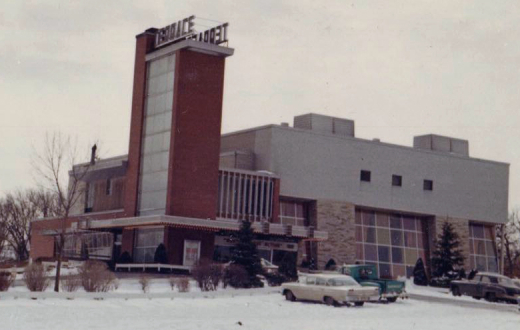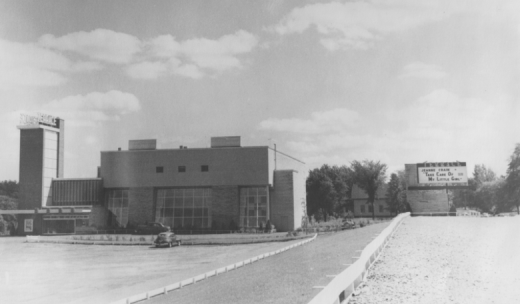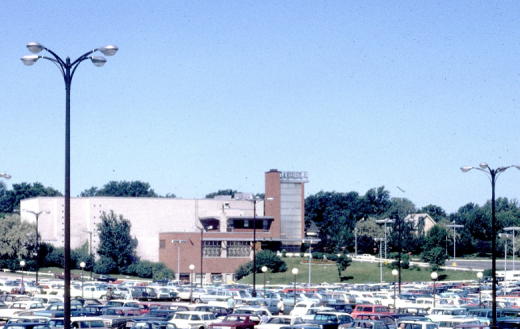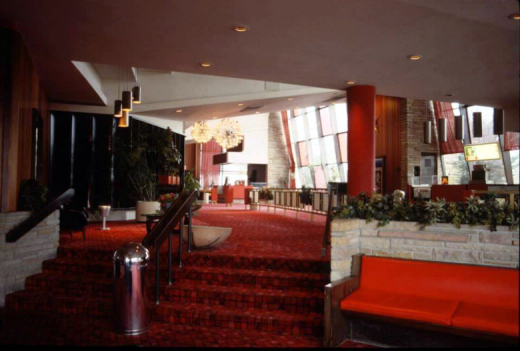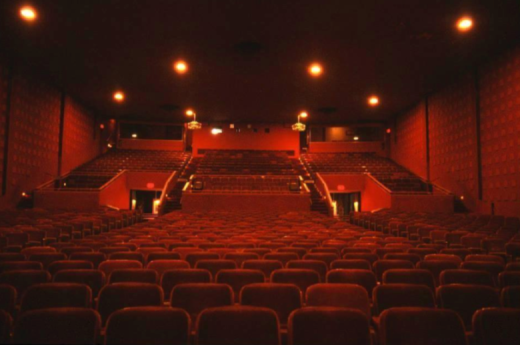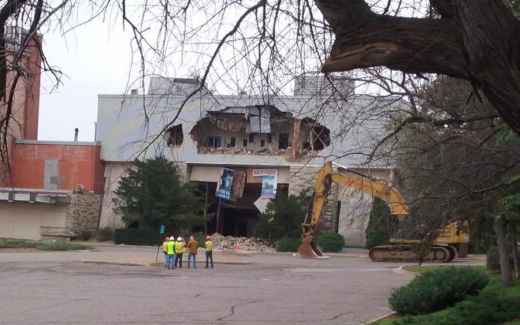The Terrace Theatre in Robbinsdale, Minnesota opened on May 25th, 1951. The Mid-Century Modern building designed by the architectural firm of Liebenberg & Kaplan, for movie house owners, Sydney and William Volk, won national acclaim from newspapers, magazines, and industry publications. The August 4th, 1951 issue of Box Office Magazine featured the Terrace on the cover and contained a five page, illustrated article that praised the Terrace as “The Gem of the Lakes.”
The Volk brothers spared no expense in the construction of their flagship theater. Inside the massive auditorium, 1299 soft cushioned seats faced a 26-foot screen. Soundproof rooms on either side of the projection booth could be used for parties or crying babies. Outside the auditorium, a split-level lobby gave way to a sunken den, fireplace, television lounge and enormous, slanted windows.
The Terrace opened just as televisions began appearing in the living rooms of America and the Volks' new movie theater was met with some skepticism. In August of 1951, Business Week reported, "Last May, two Minneapolis movie owners pulled a stunt that made every other exhibitor in the area decide they had blown their lids sky high. In nearby Robbinsdale, Minn., William and Sidney Volk opened a movie theater that had cost them close to $1 million to build. Since television seemed to have put the movie business solidly on the skids, this looked like an elaborate way to commit suicide." Sidney Volk brushed aside criticism and explained to local reporters, that most people had kitchens and refrigerators, but they still went out to eat. The Terrace proved to be a success. The theater attracted movie goers from every corner of the Twin Cities and remained an entertainment destination for almost 50 years.

